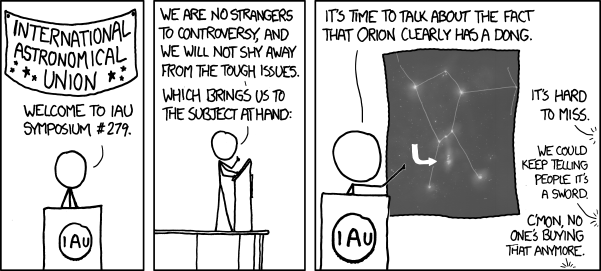Ah, Titan. Saturn's largest moon, with a composition that would make it appear to be a bizzaro-Earth, has long held my attention. With its nitrogen atmosphere, methane lakes, ammonia seas, and rocky mountains, it's perhaps the most interesting body in our solar system (next to Earth, of course).
 Our moon, Titan, and Earth
Our moon, Titan, and Earth
I was very excited to find a new article about Titan on Physorg.com about its atmosphere:
http://www.physorg.com/news/2012-01-titan-atmosphere-earth-like-thought.html
What really piqued my interest was the allusion to finding life on Titan. While the simulation is a far cry from evidence, showing that a very complex, multi-layer atmosphere does make the idea a bit more reasonable. After all, Titan has one of the densest atmospheres in the solar system. And that in of itself is a big mystery. How did Titan get to have such an amazing atmosphere, and how is it managing to stay so stable (it's actually losing its atmosphere, but is being replenished somehow)? There are different theories, ranging from vulcanism to bacteria. No one really knows why yet, unfortunately. Titan is so very different from every other moon in the solar system. It's exotic even compared to the not-so-distant moons of Jupiter, which have virtually no atmosphere. Searching for more information, I came across this article:
http://www.astrobio.net/index.php?option=com_retrospection&task=detail&id=1755
McKay discusses his ideas, saying Titan probably condensed with nitrogen and methane, forming the layers of atmosphere that we know of, but further probe results are needed to find out more. I'll get right on that.
